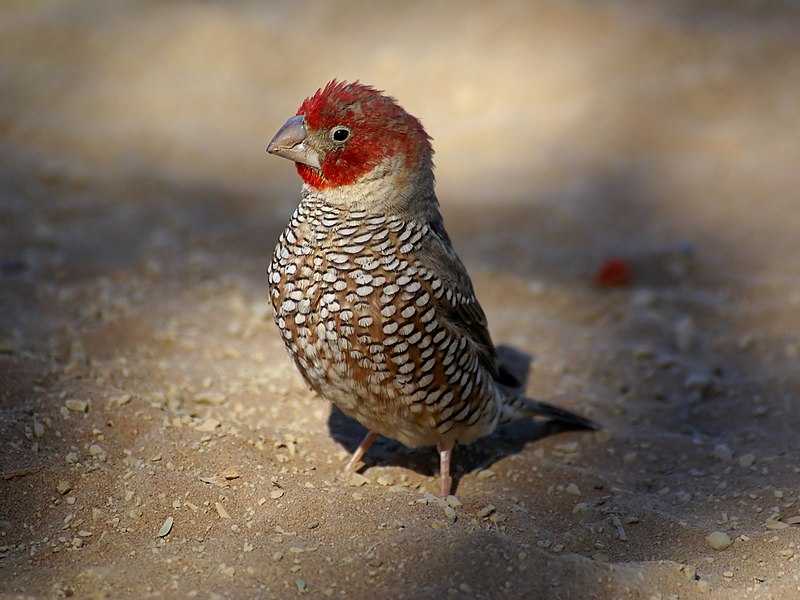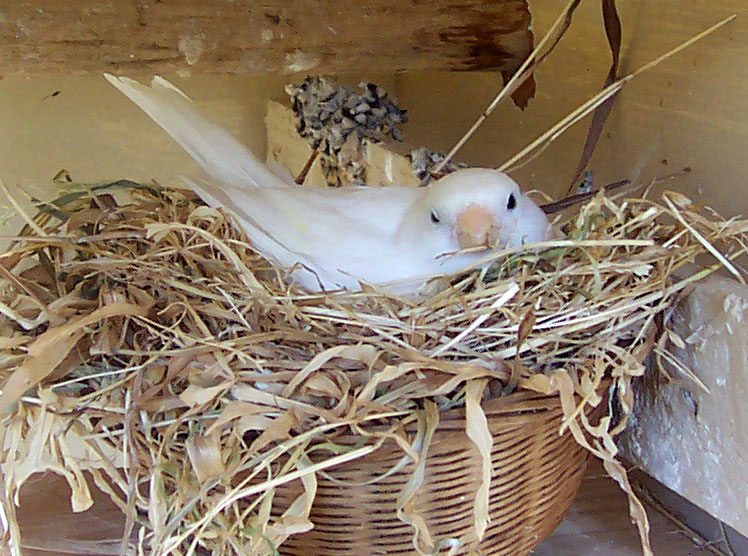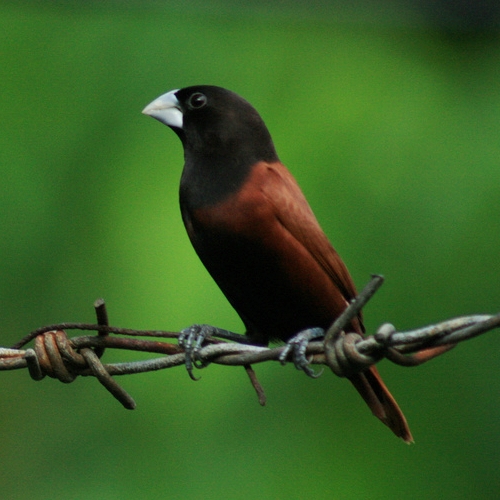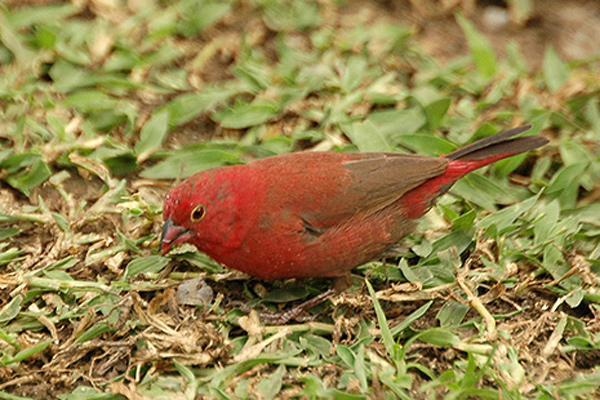 The Red-Headed Finch (Amadina erythrocephala) somewhat resembles its more familiar cousin, the Cutthroat Finch, but is a bit larger and, in my opinion, even more striking in appearance. It is also a more reliable breeder than the Cutthroat and, if properly cared for, may live for over a decade. Many keepers report that their Red-Headed Finches mimic sounds, and the songs of other birds, quite well.
The Red-Headed Finch (Amadina erythrocephala) somewhat resembles its more familiar cousin, the Cutthroat Finch, but is a bit larger and, in my opinion, even more striking in appearance. It is also a more reliable breeder than the Cutthroat and, if properly cared for, may live for over a decade. Many keepers report that their Red-Headed Finches mimic sounds, and the songs of other birds, quite well.
Description
In place of the Cutthroat Finch’s attractive splash of color (please see photo), the male has a bright red or crimson head, and his breast is beautifully marked with black-rimmed white spots. Females lack the red head and are more somberly-colored in general.
The alternate common name, Paradise Sparrow, is apt – in part due to the brilliant plumage but also because this 5 ¼ inch-long bird is stoutly built, and puts one more in mind of a sparrow than a typical finch. Read More »
 That Bird Blog – Bird Care and History for Pet Birds
That Bird Blog – Bird Care and History for Pet Birds



